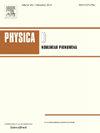Reconstructing turbulence: A deep learning–enhanced interpolation approach
IF 2.9
3区 数学
Q1 MATHEMATICS, APPLIED
引用次数: 0
Abstract
High-resolution data are essential for analysing turbulent flows, yet direct numerical simulations are often computationally prohibitive. Super-resolution based on deep learning (DL) offers a promising alternative for reconstructing high-fidelity fields from coarse data. This study introduces and validates a novel hybrid framework that combines classical interpolation with a convolutional neural network (CNN) to perform super-resolution on two-dimensional turbulent flow fields. The architecture is designed to be computationally efficient and physically consistent, leveraging interpolation as a method to assist in simplifying the reconstruction task for the DL model. We evaluated the framework on three distinct turbulent flow cases—interior room airflow, sudden expansion corner flow, and turbulent channel flow—using data from implicit Large Eddy Simulations. The performance was benchmarked against both standalone interpolation methods and conventional CNN-only architectures. Results demonstrate that the hybrid approach provides superior reconstruction accuracy, as quantified by numerical measures including peak signal-to-noise ratio and the structural similarity index. Furthermore, we validate the physical consistency of the reconstructed fields by analysing their energy spectra and turbulence probability density functions, confirming that the model faithfully reproduces the essential characteristics of turbulent flow physics. This work presents a practical and effective tool for generating high-quality turbulence data at a fraction of the computational cost required by traditional methods.
重建湍流:一种深度学习增强的插值方法
高分辨率的数据对于分析湍流是必不可少的,然而直接的数值模拟通常在计算上是禁止的。基于深度学习(DL)的超分辨率为从粗数据中重建高保真字段提供了一种有希望的替代方案。本文介绍并验证了一种将经典插值与卷积神经网络(CNN)相结合的新型混合框架,用于二维湍流流场的超分辨率分析。该架构被设计为计算效率高,物理上一致,利用插值作为一种方法来帮助简化DL模型的重建任务。我们利用隐式大涡模拟的数据,对三种不同的湍流情况——室内气流、突然膨胀角流和湍流通道流——的框架进行了评估。对独立插值方法和传统的cnn架构进行了性能基准测试。结果表明,通过峰值信噪比和结构相似指数等数值度量,混合方法具有较高的重建精度。此外,我们通过分析其能谱和湍流概率密度函数验证了重建场的物理一致性,证实了该模型忠实地再现了湍流物理的基本特征。这项工作提供了一种实用而有效的工具,可以在传统方法所需的计算成本的一小部分上生成高质量的湍流数据。
本文章由计算机程序翻译,如有差异,请以英文原文为准。
求助全文
约1分钟内获得全文
求助全文
来源期刊

Physica D: Nonlinear Phenomena
物理-物理:数学物理
CiteScore
7.30
自引率
7.50%
发文量
213
审稿时长
65 days
期刊介绍:
Physica D (Nonlinear Phenomena) publishes research and review articles reporting on experimental and theoretical works, techniques and ideas that advance the understanding of nonlinear phenomena. Topics encompass wave motion in physical, chemical and biological systems; physical or biological phenomena governed by nonlinear field equations, including hydrodynamics and turbulence; pattern formation and cooperative phenomena; instability, bifurcations, chaos, and space-time disorder; integrable/Hamiltonian systems; asymptotic analysis and, more generally, mathematical methods for nonlinear systems.
 求助内容:
求助内容: 应助结果提醒方式:
应助结果提醒方式:


